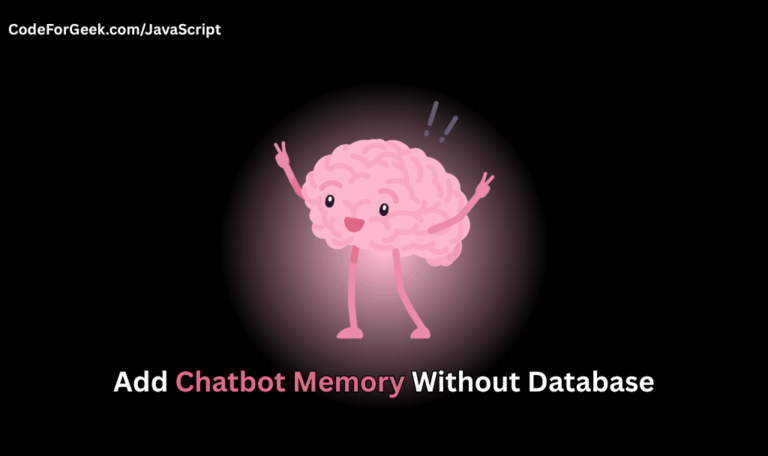Have we ever struggled to build a dynamic message in JavaScript, only to find ourselves tangled in a mess of plus signs and quotation marks? Picture this: we need to greet a user by name, display a calculated total, or craft a multi-line message that changes based on real-time data. Before ES6, stitching variables into strings felt clumsy and error-prone, but now there is a cleaner, more powerful way—JavaScript string interpolation with template literals.
String interpolation is not just a technical term, it is a game-changer for writing readable and maintainable code. With template literals, we can seamlessly embed variables and expressions directly into our strings, making our code easier to write and understand. No more breaking sentences into fragments or losing track of which variable goes where.
In this article, we will explore how mastering ES6 template literals can transform the way we handle strings in JavaScript, saving time and reducing bugs. Whether we are beginners or seasoned developers, unlocking this skill means writing cleaner code today and staying ahead as JavaScript continues to evolve.
Key Takeaways
- Template literals are a modern way to create strings in JavaScript, making it easier for us to add variables or expressions directly inside a string.
- We use backtick characters instead of single or double quotes to start and end template literals, which helps us write multi-line strings without extra symbols.
- To add a variable or expression inside a string, we use the ${} syntax within the backticks, so the value is automatically included when the code runs.
- Template literals help us avoid complicated string concatenation, making our code easier to read and understand.
- We can use template literals to include numbers, arrays, or even objects in our strings, and JavaScript will convert them to a string format for us.
- Using template literals is now considered best practice for string interpolation in JavaScript, especially since ES6, because it keeps our code clean and consistent.
- If we need to use the exact characters ${} in our string without interpolation, we must escape them so JavaScript does not treat them as placeholders.
Also Read: Scope In JavaScript: Block, Function, Local, and Global
What is ES6?
All over the world people are using JavaScript to write code and keep in mind that JavaScript was written in only 7 days, there are some difficult problems when a team has to work on a single project. To make things easier ECMAScript was born, it is a standardization of JavaScript that helps us note the best practices while working together in JavaScript. The version of ECMAScript that came out in 2015 is known as ES6 or ECMAScript 6 since it is the 6th version of it. Today a lot of browsers support ES6 syntax and features so it is recommended to know and use these syntax and features.
What are template literals?
ES6 introduced a lot of literals to write code faster and easier. The main property of this is that the written code is very much similar to its output. Let us take an example:
let x = 5;
let y = x * x;
let answer = "The square of " +x+" is "+y;
console.log(answer);
In the above code block, we had to use string concatenation to get the desired output, notice the spaces inside the double quotes, without them the output would skip the spaces. This is hard to read and confusing when processing a lot of text. However, if we use the template literals (backticks “) we can make it easier to read. The code then becomes:
let x = 5;
let y = x * x;
//let answer = "The square of " +x+" is "+y;
let answer = `The square of ${x} is ${y}`;
console.log(answer);
The method we used before is known as a string literal.
Points to keep in mind when using String and Template Literals
Let us first see what the old way of working with strings was through a set of examples. First, let us see how to write a simple sentence and store it in a variable and print it out in the console. The code is as follows:
let sent = 'This is a sentence stored in a variable.'
console.log(sent);
We can also use single and double quotes inside the string and print them out. We can do this in two ways, the first way is to encase the string in the other quote type and use the other one in the string itself, what I mean by this is, if you use single quotes to encase the string, then you must use the double quotes to encase the quoted text inside the text. See the following example:
let doubleQuoted = 'This is a string where we use "double quotes".'
console.log(doubleQuoted);
And if you are using double quotes outside, then you must use single quotes inside:
let singleQuoted = "This is a string where we use 'single quotes'."
console.log(singleQuoted);
You can also use the single quotes inside the single quotes only if you escape those characters, like this:
let oldSentence = 'Hi \'this\' is how we escape characters.'
console.log(oldSentence);
As you can see this is very messy and easy to make a mistake. Also, let us take a look at string concatenation using the + operator:
let firstName = 'Writwik'
let lastName = 'Ray'
let fullName = firstName + ' ' + lastName;
console.log(fullName);
So much work just for the inclusion of a space between the first and last names. And if this is not enough there are linebreaks:
let oldLineBreak = 'Hi this is\na linebreak.'
console.log(oldLineBreak);
Reading the code in haste might result in missing the tiny \n escape character and confuse you completely when you check the output later.
So let us now take a look at what ES6 offers us as a solution to all these problems. In ES6 we can use the backticks when we want to use string literals. The new way of writing quotes is as follows:
let newSentence = `Hi 'here' we don't need to escape characters`
console.log(newSentence);
Also to include space we just include it in between the variable, no need to close the backtick and rewrite it again:
let newFullName = `${firstName} ${lastName}`;
console.log(newFullName);
Linebreaks are also much easier to read and implement:
let newLineBreak = `And this
is the new linebreak.`
console.log(newLineBreak);
Also, we must mention while using template literals we can simply add in the expressions inside ${} which will denote the value of the variable. We used this in the full-name example. To make it clear let’s make a simple tax deduction calculator:
let price = 100;
let tax = 0.20;
console.log(`Total: ${price * (1-tax)} Rs./-`)
The full code for the above examples is given below:
//let x = 5;
//let y = x * x;
//let answer = "The square of " +x+" is "+y;
//let answer = `The square of ${x} is ${y}`;
//console.log(answer);
let price = 100;
let tax = 0.20;
let sent = 'This is a sentence stored in a variable.'
console.log(sent);
doubleQuoted = 'This is a string where we use "double quotes".'
console.log(doubleQuoted);
let singleQuoted = "This is a string where we use 'single quotes'."
console.log(singleQuoted);
let oldSentence = 'Hi \'this\' is how we escape characters.'
let firstName = 'Writwik'
let lastName = 'Ray'
let fullName = firstName + ' ' + lastName;
let oldLineBreak = 'Hi this is\na linebreak.'
console.log(oldSentence);
console.log(fullName);
console.log(oldLineBreak);
console.log('Total: '+price*(1-tax)+' Rs./-');
console.log('\n#####END OF OLD OUTPUT#####\n');
let newSentence = `Hi 'here' we don't need to escape characters`
let newFullName = `${firstName} ${lastName}`;
let newLineBreak = `And this
is the new linebreak.`
console.log(newSentence);
console.log(newFullName);
console.log(newLineBreak);
console.log(`Total: ${price * (1-tax)} Rs./-`)
console.log(`
#####END OF NEW (ES6) OUTPUT#####
`);
Common Pitfalls
Forgetting to Use Backticks for Template Literals
One common mistake is using single or double quotes instead of backticks when trying to use template literals. Template literals only work with backticks. If we use quotes, the placeholders will not be replaced and will appear as plain text.
Wrong: “Hello, ${name}”
Correct: `Hello, ${name}`
To avoid this, always remember to use backticks when we want to use string interpolation in JavaScript.
Not Encoding Special Characters in URLs
When building URLs with template literals, special characters in variables can break the URL or cause security issues. For example, if a variable contains spaces or symbols, the URL will not work as expected.
Wrong: `https://example.com/search?query=${searchTerm}`
If searchTerm is “hello world”, the URL will have a space, which is not valid.
To fix this, always use encodeURIComponent for variables in URLs.
Correct: `https://example.com/search?query=${encodeURIComponent(searchTerm)}`
Mixing Up Template Literals and String Concatenation
Sometimes we mix template literals with the plus sign for string concatenation. This can make the code hard to read and lead to mistakes. Template literals are meant to replace the need for the plus sign when combining strings and variables.
Wrong: "Hello" + ${name}
Correct: `Hello, ${name}`
To keep the code clean, use either template literals or string concatenation, not both together.
Frequently Asked Questions
What is string interpolation in JavaScript?
String interpolation in JavaScript is a way to insert variable values or expressions directly into a string, making it easier to build dynamic sentences or messages.
How does ES6 make string interpolation easier?
ES6 introduced template literals, which allow us to embed variables and expressions inside strings using backticks and the ${} syntax, making our code cleaner and more readable.
What are template literals?
Template literals are strings enclosed by backticks instead of single or double quotes, and they support string interpolation and multi-line strings.
How do we use template literals for string interpolation?
We can use backticks to wrap the string and place variables or expressions inside ${} within the string, so the values are automatically included when the string is created.
Can template literals handle multi-line strings?
Yes, template literals allow us to write strings over multiple lines without needing special characters, making it simple to create multi-line text.
What was the common way to combine strings and variables before ES6?
Before ES6, we joined strings and variables using the plus sign, which is called string concatenation, but this method can make code harder to read and maintain.
Are there other ways to do string interpolation in JavaScript?
Besides template literals, we can use the String.concat() method or the Array join() method, but these are less common and not as clean as template literals.
What is ECMAScript 6 or ES6?
ES6 is the sixth version of the ECMAScript standard, released in 2015, and it brought many new features to JavaScript, including template literals for string interpolation.
Why should we use template literals instead of string concatenation?
Template literals make our code easier to read, reduce errors, and allow us to include variables and expressions directly in strings without extra symbols or plus signs.
Can we use expressions inside template literals?
Yes, we can place any valid JavaScript expression inside ${} in a template literal, and the result will be included in the string.
Do all browsers support ES6 template literals?
Most modern browsers support ES6 features, including template literals, but it is always good to check compatibility if we are working with older browsers.
What happens if we use single or double quotes instead of backticks with ${}?
If we use single or double quotes, the ${} will not work for interpolation, and the string will show the symbols as plain text instead of inserting the variable value.
AI Dev Assistant Tips
Artificial Intelligence tools such as GitHub Copilot and ChatGPT can be very helpful when we work with JavaScript string interpolation and ES6 template literals. These tools can suggest code snippets, explain how template literals work, and even help us debug common mistakes, such as using the wrong quotation marks or forgetting to use curly braces for variables.
For example, when we are unsure how to format a string with variables, we can ask an AI assistant to show us the correct syntax. AI can also help us understand the difference between template literals and traditional string concatenation, and give examples that match our own code style.
Copy-Paste-Ready AI Prompt
Show how to use ES6 template literals for string interpolation in JavaScript. Give an example where a sentence uses two variables, and explain why template literals are better than using plus signs for string concatenation.
- Ask the AI to explain the difference between template literals and regular strings, so we can avoid confusion about back ticks and quotation marks.
- Request code examples that match our own project, such as using variables inside a sentence or creating dynamic HTML elements.
- Use the AI to check our code for common mistakes, like missing curly braces or using the wrong type of quotation mark.
- When we get an answer from the AI, try the code in our own editor to see how it works, and adjust it to fit our needs.
- If we are not sure about the explanation, ask the AI to use simpler words or break down each step, so we can understand better.
Conclusion
This article covered everything about the string literals in JavaScript using the ES6 syntax. We hope you guys have understood and expanded your knowledge of JavaScript. For more such awesome articles, code, and examples make sure to keep on reading CodeForGeek. That’s all for this one, see you later!
Reference
https://developer.mozilla.org/en-US/docs/Web/JavaScript/Reference/Template_literals
About the Author
Aditya Gupta is a Full Stack Developer with over 3 years of experience building scalable and maintainable web applications. He is passionate about writing clean code and helping other developers level up their skills in the modern JavaScript ecosystem.
Connect on LinkedIn: https://www.linkedin.com/in/dev-aditya-gupta/
My Mission: To demystify complex programming concepts and empower developers to build better software.





